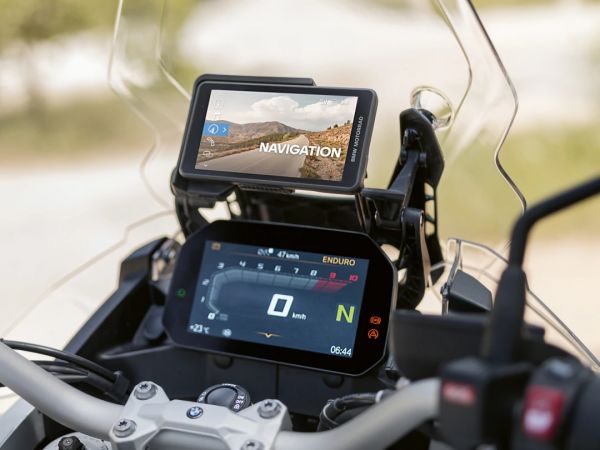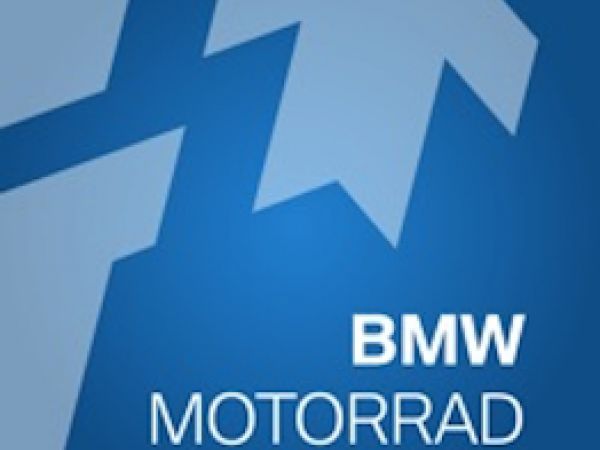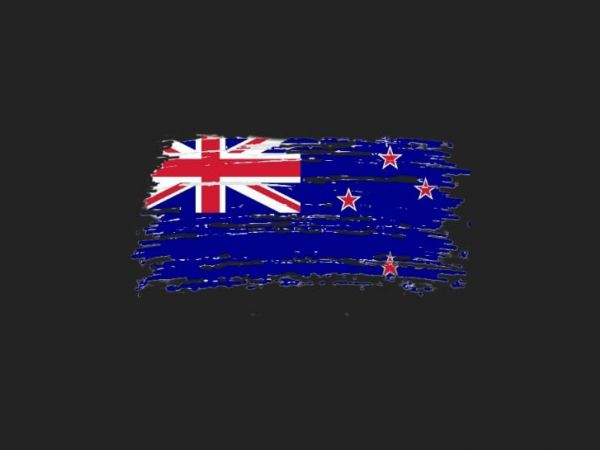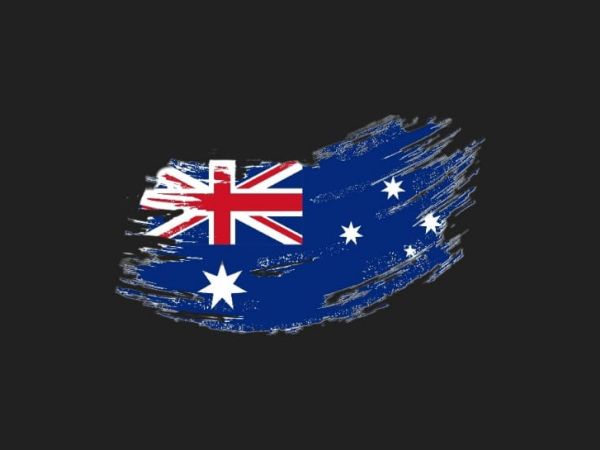Traffic regulations in South America - Ecuador
Traffic regulations in South America - Ecuador
Category: Traffic regulations in South America
What should be considered on a motorcycle tour through Ecuador? What documents do you need to bring with you? Which special features in road traffic have to be observed. MotoGS WorldTours provides you with answers to your most important questions.
Errors and omissions excepted - all information without guarantee.
Basics:
The Republic of Ecuador is the ninth largest country in South America and is located on the Pacific Ocean. The equator runs right across the country, hence the name Ecuador.
The tropical country of Ecuador lies on both sides of the equator in northwestern South America. The nature of the country is mainly characterized by the Andes chains with highlands in between.
Ecuador is an agriculturally structured developing country whose economy is mainly based on banana and oil exports. The country is therefore heavily dependent on the world market.
Ecuador is the smallest of the Andean countries (Chile, Peru and Bolivia) and is slightly larger than, for example, Great Britain. The national territory also includes the Galapagos Islands, which are about 1000 km off the Pacific coast. The 130 offshore islands are actually volcanoes jutting out of the water. They are known for many rare animal and plant species that can only be found there. These include certain species of turtles, lizards, sea lions, penguins and many type of birds.
Ecuador borders Colombia to the north, Peru to the east and south, and the Pacific Ocean to the west.
The capital, Quito, lies at an altitude of almost 3000 m in the Andes and is the highest state capital in the world and a UNESCO World Heritage Site, just as the Galapagos Islands are a UNESCO nature reserve.
Much of Ecuador is mountainous. The highest mountain, the Chimborazo in the Andes, is 6310 meters high. Some volcanoes in the area are still active and the country also has much of the rainforest belonging to the Amazon River.
Compared to other South American countries, Ecuador is a rather poor country, but a very attractive country, rich in nature and its beauty.
What happened earlier in Ecuador?
Guayaquil is the largest city in Ecuador, more than two and a half million people live in the city, in the capital Quito itself, “only” almost two million live. Guayaquil has the most modern airport in all of South America, the Airport of Guayaquil, José Joaquín de Olmedo.
In the area of today's Ecuador, the Inca ruled and lived in the past. In 1534, the Spanish conquered the country, led by Francisco Pizarro. Later, the country became a Spanish colony, where many Indians lost their lives through disease and hard work.
Almost 300 years later, the indigenous peoples liberated themselves from the Spanish and Ecuador has been an independent republic since 1830. There was often a dictatorship and uprisings against it. The head of state still has more command power than in many other countries. Ecuador has had a new constitution since 2008.
Vehicle papers and other necessary documents:
Travelers from all EU countries, for example EU citizens, as well as the USA, Canada and Australia, do not need a special visa unless you plan to spend more than 90 days (start of entry day) in Ecuador.
Travelers from the countries mentioned above receive their tourist visa for a maximum of 90 days directly upon entry. Since February 2017, this visa can be extended once by a further 90 days. To extend the 90-day visa, travelers must contact the Ecuadorian Foreign Minister before it expires.
Almost similar requirements apply to non-EU citizens, but this always depends on your actual country of origin. Therefore, for your own safety, you should check the visa requirements for your home country to enter Ecuador at VisaHQ. This website is a very good indicator to find out easily.
The entry stamp is mandatory. This also applies to entry via the land border of Peru or Colombia. Anyone who violates the right of residence in Ecuador must expect severe penalties. Detention pending deportation can also be the result of a continued stay in Ecuador.
The passport or a passport copy must be carried with you at all times during your trip to Ecuador. If you lose your passport, you should go to the embassy in Quito.
In the event of any arrests, you should insist on immediately informing the embassy of your country of origin!
Ecuadorian Customs:
The import and export of local and foreign currency over USD 10,000 must be declared, the import of cash over USD 30,000 is prohibited. Foreign currency over USD 9,000 must be declared upon departure and a tax of 5% must also be paid. Credit cards or US dollars in cash are recommended. Euros can be exchanged at banks and exchange offices.
Items intended for your own use, such as clothing, linen, shoes, toiletries, laptops, etc., may be imported duty-free. This also includes motorcycle protective clothing, such as helmets, etc..
You are also allowed (if over 18 years old) to carry 300 cigarettes or 50 cigars or 200 g of tobacco, 1 liter of spirits and a small amount of perfume or eau de toilette duty-free. When exporting from Ecuador, pre-Columbian objects (as long as they are genuine) and black coral souvenirs are strictly prohibited. For handicrafts, on the other hand, there are no export restrictions for non-commercial quantities. Fruit, vegetables and plants are also not allowed to be exported! Live animals, animal skins, shells and reptile skins fall under the Washington Convention on International Trade in Endangered Species and are therefore strictly prohibited.
Criminal law provisions:
Drug consumption and dealing are punished with long prison sentences (approx. 8-16 years), even for the smallest amounts. Taking or transporting objects for third parties without knowledge of the contents can therefore have disastrous consequences.
Security and what about crime in Ecuador?
The crime rate and the willingness to use violence are high. Petty crime, such as pickpocketing, occurs particularly in the big cities in places that are very frequented by tourists. There is an increased risk of becoming a victim of theft, robbery or other violent crimes, especially in the metropolises of Guayaquil and Quito and Cuenca, as well as on the coast.
There is an increased risk of kidnapping and activities by armed groups linked to drug trafficking throughout the border region with Colombia.
The risk of mugging is particularly high in Esmeraldas Province, the coastal area in and around the city of Esmeraldas and when visiting the city of Santo Domingo.
Theft, robberies and sexual offenses occur to a considerable and increasing extent in larger cities, in tourist areas and especially in buses and bus stations. The perpetrators use a variety of tricks such as for example:
- diversionary tactics,
- extortion of fines using false uniforms,
- robbery or rape after administration of drugs (also in the form of powder in food or drinks),
- robberies by taxi drivers in unregistered taxis actively soliciting potential customers.
In the past, there have been multiple attacks and violent crimes on hiking routes to popular tourist destinations (waterfalls, volcanoes, beaches).
In Montañita (province of Santa Elena on the coast) there have been several cases of rape of foreign women in recent months after the victims were administered knockout drops or similar. Individual travelers are particularly at risk.
Be particularly careful in large crowds such as at airports, train stations, markets and on public transport and always keep an eye on your valuables.
NEVER leave YOUR drink, anywhere, unattended! Don't accept drinks, food, candy, or cigarettes from strangers. It is repeatedly reported that victims are given so-called "K.O. drops" such as scopolamine (also known as hyoscine, or devil's breath) or similar drugs. Victims die this way every day. You are safe if you simply understand such tips, and accept them.
Only make cross-country trips during the day and always pay attention to your luggage. Especially on buses, stow your luggage in the luggage rack above you, even if you have been asked to leave your luggage elsewhere by a person who appears to be from the bus company.
Is there a high risk of being mugged?
NO, If you listen to your gut feeling and take as few valuables with you as possible and do not carry them around obviously, then the probability is relatively low. Most robberies involve purses, cell phones or cameras. In the event of a robbery, it is always highly advisable not to resist and to be willing to surrender valuables, as in most cases the attackers will actually be armed. This is meant exactly as it is written. Playing the hero has turned out negatively at one point or another.
Always remember, the perpetrator or the possible perpetrators have nothing to lose and YOU are in their country and these people know their way around there better and are also organized. So just follow it and you will be able to and will enjoy your stay.
Language:
The official language is Ecuadorian Spanish. Ecuadorian Spanish is assigned to the Spanish-speaking world, although there are some local peculiarities.
Twenty-three indigenous languages exist alongside Ecuadorian Spanish.
Is the second language English in Ecuador?
Outside of the big cities, you do not get that far in Ecuador with English. Away from the tourist facilities (such as hotels and better restaurants), English skills are usually rather limited.
While English is becoming increasingly popular as a second language in Ecuador, at least a basic knowledge of Spanish is still very useful when traveling in Ecuador, unless you are on a guided group tour with a bilingual guide.
A well-functioning translation program is certainly an advantage, but not very helpful when dealing with important questions or even problems.
Without a bilingual speaking guide or without very good basic knowledge, your trip will be exciting.
Currency:
Ecuador does not have its own currency, but has been using the US dollar as its official currency since September 2000. Before that, the official currency was the Sucre.
If you want to convert Euros to US-Dollars, the Oanda website is a very good source of information.
Vaccinations:
There are vaccinations that you need for almost every vacation, such as hepatitis A and hepatitis B. Diphtheria, tetanus and polio should also be boosted regularly. In addition, there are other vaccinations that you only need if you travel to these regions:
Unfortunately, preventive health care for a trip to South America or Ecuador cannot be completely covered by vaccinations: Dengue fever, for example, against which there is no vaccination, is unfortunately an issue in large parts of South America.
Depending on the specific travel route, however, we recommend, among other things, cholera vaccination, diphtheria vaccination, yellow fever vaccination, hepatitis A vaccination, hepatitis B vaccination, polio vaccination, tetanus vaccination and possibly rabies vaccination as well as measures for malaria prophylaxis. These vaccinations are recommended, regardless of whether you are traveling to Argentina, Peru, Chile, Brazil, Colombia, Venezuela or even Ecuador.
Vehicle papers and other necessary documents:
Assuming that you do NOT want to bring your own motorcycle or have it brought to Ecuador, but simply rent a motorcycle on site in a much less complicated way, then the following documents must also be brought with you.
Of course, you can also have your motorcycle shipped to Ecuador or generally to South America by ship or air freight for a certain period of time. Basically no problem. BUT, time-consuming, cost-intensive and always the risk in the neck, for example, everything goes according to plan at customs in the country of arrival.
Many motorcyclists and globetrotters have their own motorcycles with them, which of course has a certain charm and is understandable, but there is also a little easier way. What if your own motorcycle is totaled in an accident, for example, what if it was stolen. Always remember, the motorcycle MUST be re-shipped for customs purposes. If the motorcycle has not been demonstrably re-shipped within the prescribed time (3 to 6 months, with an extension up to 12 months), this is considered an import and this is guaranteed to cause major problems and is very expensive. Confiscation will result and enforcement action for customs fraud. That is why we are dealing here with renting a motorcycle on site.
According to Ecuadorian traffic law, your national motorcycle license is sufficient. This applies to all nationalities. However, it is always advisable to have an international driver's license with you (usually issued for a period of 3 years). Because the rental stations often also require an international driver's license.
An IDP (International Drivers Permit) is also not mandatory. But if you feel more comfortable having an IDP with you, you can apply for one in Spanish and many other languages at the International Drivers Association.
The legal driving age for general motor vehicles in Ecuador is 18 years. For foreigners who want to rent a motorcycle in the Republic of Ecuador, the rental stations usually require a minimum age of 21 years, sometimes even 23 or 25 years.
Young rider surcharges for riders under the age of 25 are often required. You should also have held a motorcycle license for at least 1 year.
Of course, you also need a credit card in order to be able to deposit a necessary deposit with the rental company.
Health insurance:
In principle, all travelers to Ecuador or abroad in general, regardless of their country of origin, should take out international health insurance. This can also be done easily here via Global Rescue. Surely this type of insurance protection is a bit more expensive than other providers. However, as the name suggests, this type of coverage is built on Rescue. Therefore not comparable. However, this should not be understood as advertising, it is a simple recommendation.
Furthermore, sufficient international health insurance is necessary for entering Ecuador.
Helmet obligation:
Basically, there is also a helmet requirement in Ecuador! And this just for your own safety. However, the locals do not really stick to it.
First aid kit / warning vests:
It is always advisable to carry a high-visibility vest, a first aid kit in a dustproof package, a motorcycle warning triangle and a small warning light.
Lighting:
Outside of built-up areas, you must ride with your headlights on all year round during the day. It is therefore always advisable to take a set of spare light bulbs with you. Excluded are motorcycles equipped with LED lights.
Speed limits in Ecuador:
In town on main roads: 50 km/h
Bypass: 90 km/h
Straight roads (motorways) 90 km/h.
Pay Attention:
Exceeding the speed limit will be strictly prosecuted and punished. Even for minor speeding violations, such as riding within the city at a speed of more than 60 km/h, for example 61 km/h, you can expect a 3-day prison sentence under certain circumstances. The driver's license will probably also be confiscated and if you are lucky, the driver's license will be returned at customs on the day of your flight home.
Alcohol limit:
The general traffic rules of Ecuador also determine how much blood alcohol in the blood drivers are still allowed to ride a motorcycle. The general alcohol limit is 0.08‰. In the event of an accident due to the influence of alcohol and an injured person, for example a pedestrian or even your own passenger, there is a risk of a high prison sentence depending on the severity of the injury.
Since the police are very sensitive to alcohol consumption, it is advisable in Ecuador to only sit on the motorcycle WITHOUT alcohol.
Environmental zone:
A restriction of motor traffic by an environmental zone, as the environmental zones are known in Europe, are not known in Ecuador.
In other words, there is no information about an environmental zone in Ecuador.
Important and interesting, however, is the Pico y Placa regulation, which states that on certain days of the week and during certain peak times, cars and motorcycles are not allowed to enter the urban area of Guayaquil and Quito, depending on the number in the license plate. Since each city has its own regulations and these change every 6 months, you should inform yourself beforehand on the Internet and from your motorcycle rental company.
Note: however, this Pico y Placa regulation is more about reducing traffic density than it is about any environmental protection.
Tired of tolls on motorways, tunnels and bridges.
The use of some road sections, some of which are also privately maintained road sections, in Ecuador are subject to tolls and depend on the vehicle type or size. Payment can be made in cash or, in some cases, electronically.
Correct behavior in the event of an accident or breakdown:
In any case, it is advisable and important to call the police, even in the case of "minor damage", because the police protocol is the basis for the settlement of the damage.
This is all the more important if, for example, the motorcycle was rented.
Pay Attention:
However, it is more than advisable to adapt your driving style in Ecuador in such a way that you cannot get involved in a traffic accident at all. Because in the event of a traffic accident, the police have the right to put you in prison until the court hearing.
In such cases, please complete the embassy of your country of origin immediately.
Border crossing to neighboring countries with the rented motorbike:
Basically possible, but always dependent on the respective neighboring country. So for example, Peru and Colombia. Since a possible border crossing into one of the neighboring countries depends on the respective customs regulations of the countries among themselves, it is absolutely necessary to clarify this question directly with the motorcycle rental station.
In any case, it is important to ensure that all necessary documents, such as the rental company's declaration of approval, insurance confirmation and so on, are handed over after the rental company has given his approval for crossing the border.
Fines and peculiarities in Ecuadorian road traffic:
Violations of the traffic regulations are subject to heavy fines and regular jail terms, depending on the severity of the violation.
In the event of an accident involving personal injury, all those involved must be expected to be held in custody.
General horns:
While everyone knows when and where to honk your horn in the city and countryside, you should also know that honking your horn on mountain roads is one of the critical points to consider when touring Ecuador. Since many mountain roads in Ecuador have blind spots, honking your horn before the bend is a useful sign to avoid collisions while riding. In other words, the use of horns is encouraged and perfectly normal in Ecuador. Not to say that the honking is actually used all the time.
Riding at night on the roads of Ecuador:
It is NOT recommended to continue riding after dark. Sometimes the road conditions are in such a bad condition and the street lighting is either insufficient or simply non-existent. Furthermore, the large trucks and buses at night also drive much faster than permitted or usual. And above all very inconsiderate towards any kind of two-wheeler.
It is therefore absolutely not advisable to do so.
If you have riding experience in other South American countries and, above all, have self-confidence in your own riding practice, you can also ride through Ecuador by rental motorcycle.
As already mentioned, traffic rules are not observed by many road users, especially truck, bus and taxi drivers who claim the right of the strongest for themselves.
Ecuador's traffic police also have a reputation for finding an additional source of income in foreign tourists by charging foreigners with traffic violations (real AND made up) and subjecting them to hefty fines. The Ecuadorian police are very strict and you should always bear this in mind in the event of a check or even a traffic violation.
Parking, you should always park the motorcycle in a secure and guarded parking lot, especially overnight, as theft of parts is widespread.
Emergency numbers in Ecuador:
Fire Department: 102 or 911
Ambulance service: 131 or 911
Police: 101 or 911
As of 07/10/2023

TAGS
santo domingo santa elena quito pico y placa regulation pacific coast oanda international drivers association idp - international drivers permit guayaquil galapagos islands esmeraldas province ecuadorian spanish chimborazo andes chains amazon river airport of guayaquil, josé joaquín de olmedoShare Your Thoughts
Share your experiences, questions, or suggestions!
Comments from Fellow Riders
Nobody has commented yet – your thoughts?
Blog categories
Moto Tours

* Balkan-Italy Adventure Tour
Approx. 2340 miles!
14 riding days through 5 countries!
15 overnight stays + 2 overnight stays on a ferry!

* Balkan-Carpathians-Albanian Alps Tour 2
Approx. 3138 miles!
21 riding days through 7 countries!
27 overnight stays!

* Balkan-Romania Adventure Tour
Approx. 2220 miles!
11 riding days through 5 countries!
12 overnight stays!

* Balkan-Carpathians-Albanian Alps Tour 1
Approx. 2520 miles!
15 riding days through 7 countries!
18 overnight stays!

* Croatia-Italy-France Adventure Tour
Approx. 1990 miles!
15 riding days through 4 countries!
17 overnight stays + 1 overnight stay on a ferry!

* Croatia-Sicily-Amalfi Coast Tour
Approx. 2730 miles!
18 riding days through 3 countries + Sicily!
21 overnight stays + 1 overnight stay on a ferry!

* New Zealand Adventure Tour
Approx. 4133 miles!
20 riding days through the South and North Island!
24 overnight stays + 1 overnight stay on a cruise!

Croatia - Route des Grandes Alpes, July 2025
2 Americans - 1 boy and 1 girl, 1 motorcycle - a BMW R1250GS, one motorcycle tour and one goal ...

Balkans - Romania Tour, June 2025
At the end of June 2025, the time had finally come. Between June 23 and June 25, all participants in this tour gradually arrived in Trogir.

Balkans - Italy Tour, May 2025
Together we covered about 3700 km, crossing the Adriatic twice, from Durrës to Bari and from Ancona to Split.

Money protection in the event of insolvency
Money Protection Certificate according to § 651r and § 651w of the Civil Code of the Federal Republic of Germany ...

Packing list for a motorcycle tour
Pack your things and get going...

Travel planning and navigation
The next vacation is just around the corner, hopefully, and you've decided to finally ...

Riding a motorcycle in a group or alone?
Riding a motorcycle in a group or riding alone? Are you worried about safety, contact with other people ...

The International Driving Permit
Understanding the International Driving Permit (IDP). A Key to Smooth Overseas Riding for ...

BMW Motorcycle ConnectedRide Navigator
The new BMW Motorcycle ConnectedRide Navigator ...

BMW-ConnectedRide Cradle and Connected App
Riders of new BMW models have several options for using information and entertainment ...

Traffic regulations in Oceania - New Zealand
What should be considered on a motorcycle tour through New Zealand?

Traffic regulations in Oceania - Australia
What should be considered on a motorcycle tour through Australia?

